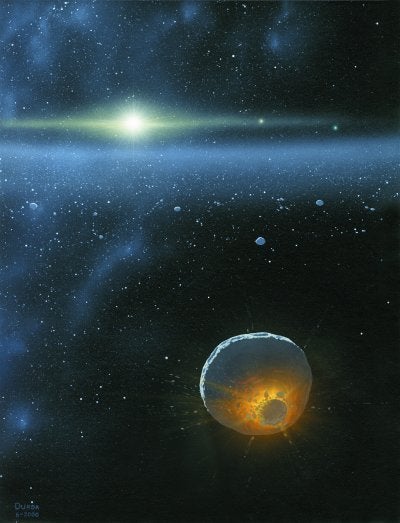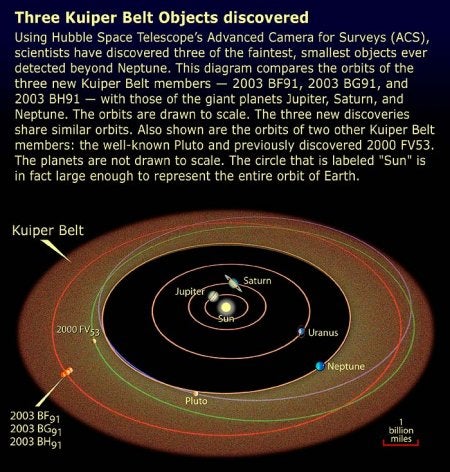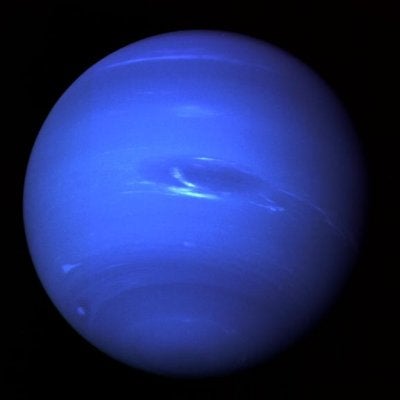Lying far beyond Neptune’s orbit and harboring billions of icy objects, the Kuiper Belt is the final frontier of our solar system. Believed to be the frozen, 3.5-billion-year-old remains of the early protoplanetary disk surrounding the Sun, this far-flung planetoid population continually puzzles astronomers regarding its true origin. Now, more than ten years after its initial discovery, the Kuiper Belt finally is revealing tantalizing clues to its ancient heritage. A new study indicates this ring of icy debris actually formed much closer to the Sun and was steadily pushed outward by the planet Neptune.
So far, astronomers have cataloged more than 900 bodies in the Kuiper Belt, some more than 620 miles (1,000 kilometers) in diameter. They believe larger Kuiper Belt objects, like planets, formed from smaller, colliding bits and pieces that gravitationally stuck together.
According to this model, however, for the Kuiper Belt to have formed in its present position, it would have to hold more than ten times the amount of material that makes up Earth. Curiously, all telescope surveys indicate there is a hundred times less material currently contained in the Kuiper Belt. This has left scientists scratching their heads, trying to come up with theories to explain this “missing mass.”
Instead of figuring out how the Kuiper Belt lost more than 99% of its original material, the two astronomers argue that none of it is missing — the Kuiper Belt simply spread out. Originally, they suggest, there were no objects beyond Neptune’s present position around 30 astronomical units (AU). But material now in the Kuiper belt migrated out to 50 AU during the final stages of planet formation.
“We really didn’t solve the mass depletion problem, we circumvented it,” explains Levison. “According to our work, the void beyond Neptune was probably devoid of objects.”
“One of the puzzling aspects of Neptune’s migration is why it stopped where it did,” says Morbidelli. “Our new model explains this well. Neptune migrated until it hit the edge of the protoplanetary disk, at which point it abruptly stopped.”
Reporting their findings in the November 27 publication of Nature, the authors state that while their theory explains many of the observable characteristics of the outer solar system, it also presents profound implications for understanding how the solar system developed as a whole.












